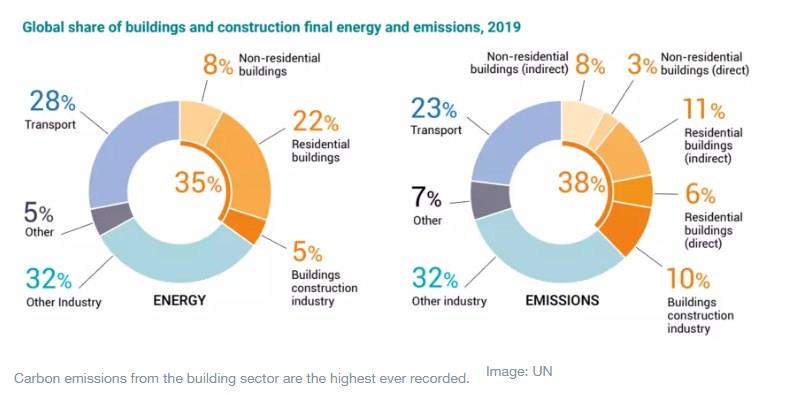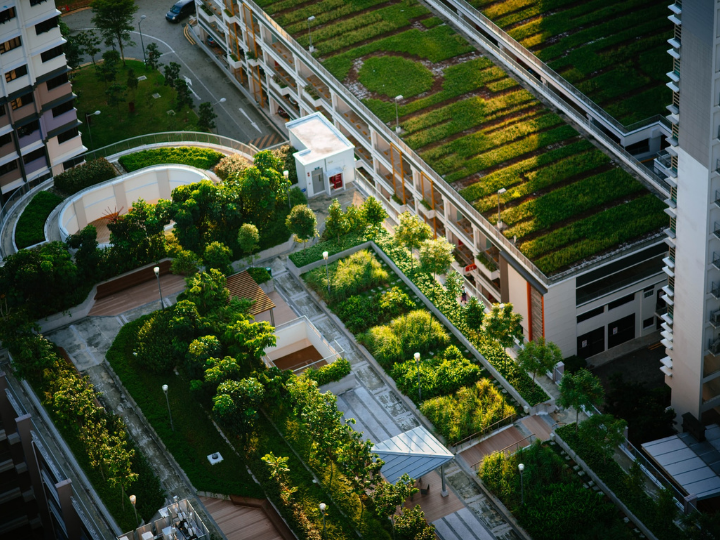by Stuart McLaren*
The majority of the built environment that will exist in 2050 already exists today. These buildings account for approximately 28% of total global carbon emissions, according to a recent report from the UN Global Alliance for Buildings and Construction.
This means a city’s key challenge is not how it will build new “net zero” infrastructure – which is “relatively easy” – but how it will decarbonise infrastructure that was built long before climate change was a key driver.
What should cities do? Here are 12 steps cities need to take to effectively decarbonise their infrastructure.
1. Develop a baseline, targets and costed roadmap.
Baselines must be data-driven and targets science-based so cities can have a high degree of confidence that their plans will actually deliver net-zero outcomes. We must not plan a theoretical net-zero future dependent on wishful thinking on behaviour change, innovation and new technologies.

2. Establish education programs and a net-zero steering committee
This should be a diverse cross-discipline, cross-industry group focusing on all aspects of decarbonisation and providing direction on integration with national plans and systems. Areas to prioritise include identifying the innovation gaps tied to a city’s transport and energy systems, retrofitting and repurposing buildings, and optimising underutilised land and infrastructure.
To be sure, this committee must exist alongside a proactive and honest education programme designed to reach and resonate amongst different communities and demographics. Just as importantly, through a strong and consistent narrative, it must be able to engage with and manage disruptive voices.
3. Understand your city as a ‘system within a system’.
Developing pathways to a net-zero future requires an understanding of how a city’s system fits within the regional and national system. Regional spatial planning, local planning and master-planning need to be simpler, with a greater line of sight.
4. Understand and respond to the innovation gap.
The difference between a city delivering “business as usual” services and responsibly tackling climate change is significant. It is essential that skills gaps are identified and addressed, and that value is placed on local talent and innovation.
5. Don’t over-rely on grid scale energy decarbonisation.
Cities need an adaptive and resilient strategy around clean energy systems in the event that grid scale clean energy capacity does not deliver as planned. Strong leadership will be needed to make intelligent decisions on how to integrate with the national and large local systems. Any independence will also need to tell the system operators what its plans are for demand planning.
6. Ensure your pathway delivers climate resilience.
Cities are becoming increasingly susceptible to climate change, with a significant amount of change already locked in over the next few decades. As such, cities must focus on ensuring their built and natural environments are not only resilient but also adaptive. Their pathway to net zero must accommodate and enable adaptation.
7. ‘Green’ your ageing infrastructure.
Rather than demolishing and removing the old – which takes time, money and carbon – repurpose ageing infrastructure to create new urban greenscapes and pedestrian transport links. Cities should be constantly seeking to “green” their surrounds to address the biodiversity crisis, societal and individual wellbeing and social justice.
8. Make the vision real for communities.
Take the lead on community engagement to showcase simple net-zero interventions. These don’t have to be time- and cost-intensive; simply repurposing a heavily trafficked area for a day or two can show people what a “pedestrianised city centre” would feel like.
9. Adopt a multimodal view of the future of transport.
The fallout of COVID and its impact on society, the economy and our way of life provides the drive to challenge the status quo and look to new and bold multi-modal sustainable transportation strategies. These can be enabled by combining planning with placemaking and digital infrastructure to decrease the need for commuting.
10. Develop a city/enterprise-level digital twin.
This seems a big ask, but it is very much possible and becoming less expensive. As one example, the Centre for Digital Built Britain is developing a National Digital Twin. The goal should be to provide cities a means to model the impact of interventions and how best to optimise performance over the coming decades.
11. Don’t forget the residuals.
It is highly likely that interventions across all segments of a city over the next 30 years will not fully decarbonise the system. As such, cities must include credible plans for managing any residuals through carbon sequestration and carbon removals, either nature-based or technological solutions. The latter is likely the most relevant for city/urban settings, so integrating these into existing and new infrastructure systems will be key.
12. Attract sustainable finance.
Underpinning all the above points is a city’s ability to finance its pathway to net zero. To attract investment, you need a credible plan, a good understanding of risk and its mitigation, sustained government (or local) policy supporting return on investment and a progressive and collaborative approach to procurement and value chain development and innovation.
With just under 30 years to decarbonise, we need industry and governments to pick up the pace and work.
By taking these 12 steps, cities can feel confident that their contribution is robust, responsible and effective.
*Director of Net Zero Infrastructure, SNC-Lavalin
**first published in: www.weforum.org




 By: N. Peter Kramer
By: N. Peter Kramer
